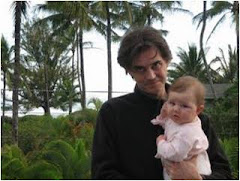In one of my roles I have the pleasure of serving as the Academic Director of the Berlin School of Creative Leadership (http://www.berlin-school.com/ ), a business school for executives in the creative industries. It is a wonderful experience spending time teaching business skills and discussing leadership with senior creative directors in the advertising, publishing, media, and other creative industries.
One of the requirements of the program is a capstone project of a Master’s thesis. The school’s second graduating class completed the program in July, ending with the presentations of their theses, and they did not disappoint. There were many fabulous pieces of research presented there, and many new ideas floating around, some of which are truly original in the field of leadership.
Craig Markus, Executive Creative Director and Executive Vice President at McCann Erickson, gave a fabulous presentation on the relationship between rage and grace in leadership. Rage and grace: the perfect partners; both necessary; both central to creative energy.
Markus argued that all great leaders have a little rage. They need the emotional impetus that drives them to do something remarkable; they need to feel unsatisfied with the status quo and furious enough to do something about it; they need to have the emotional constitution that pushes them to strive for something more. Complacency is the enemy of greatness, and leaders that have some rage are never complacent.
But rage can be a dangerous thing. It cannot be an excuse for treating people badly or acting like an ego-maniacal buffoon. Indeed, rage must be balanced by an appropriate dose of grace. Rage, according to Markus is the reaction to an event or circumstance, driving the leader to strive aggressively for change; grace is his or her ability to moderate that rage, to channel it in appropriate directions, to treat people and the world around him/her in a civil and caring fashion.
Markus analyzes a number of figures through this prism--the exegesis on Martin Luther King Jr. and Malcolm X is particularly insightful, but let's stick to examples from the business world. Take, for example, the leader at the top of everyone’s list of great creative leaders: Steve Jobs. When Steve Jobs was young… wow. Now there’s some serious rage (think about the rage conveyed in the iconographic “1984” commercial (http://www.youtube.com/watch?v=BxShzoUjiAQ ), which debuted during the Superbowl that year). And it led him to create great things. But most people who name Jobs as one of the great creative leaders of our time often forget his destructive behavior at Apple in 1984-85. His legendary battle with Scully; his insistence on occupying two distinctly different levels in the organization (Chairman of the Board and GM of Mac—in effect, being the boss of his boss), which created great organizational confusion and significant cultural dysfunction in the organization; his resignation from the board. A lot of rage; not much grace. But when Jobs returned Apple in 1996, he had enough creative drive (and enough rage) to revive and save Apple (witness: the iPod), but he also had grown into considerably more grace. His grace would balance his rage, and he would be a considerably better leader for it. (Though still not without his detractors... http://www.youtube.com/watch?v=TUl1DFBKdv8 )
Markus’ insights on leadership are fresh and provocative. His ideas take us much deeper into vague concept of passion in leadership. It is really an analysis of what drives us and how we balance the emotions of those drivers. For someone who spends most of his time thinking about the analytical and design aspects of leadership, I found Markus’ ideas about the psyche of creative leaders to be truly insightful.
Monday, August 17, 2009
Subscribe to:
Post Comments (Atom)






No comments:
Post a Comment